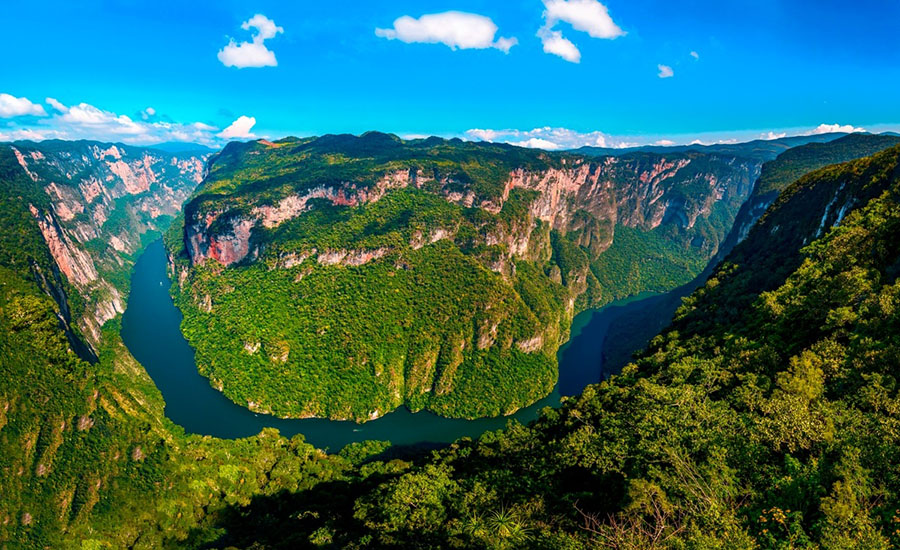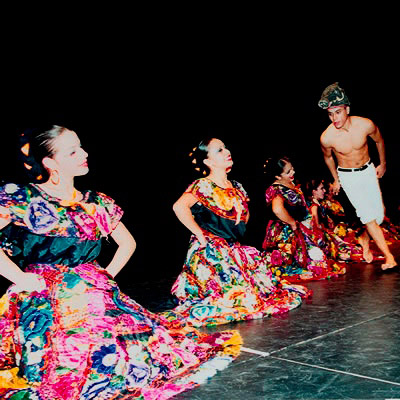Echoes of the Southeast
Chiapas is located in the southeastern region and is the "other" frontier of Mexico. Its name comes from the Nahuatl: Chiapan or river of Chia. Most of the state is embedded in a semi-tropical forest full of vegetation and wild life and is the home to various indigenous groups, direct descendants of the Mayan civilization that inhabited the area before the Spanish conquest.
Chiapas is sub-divided into several regions, each demarked by the most predominant indigenous group. Because of this regional and ethnic division, the state's folklore is extensive and varied. It includes several styles, most of which are reminiscent of ancient Maya rituals that have managed to survive to the present. These dances either include mocking animal moves of sounds or are still extremely religious in their themes.
The dance style follows the "son" style found in the rest of Mexico: Intricate foot stomping, partner choreography or soft, waltz-like tempos.



